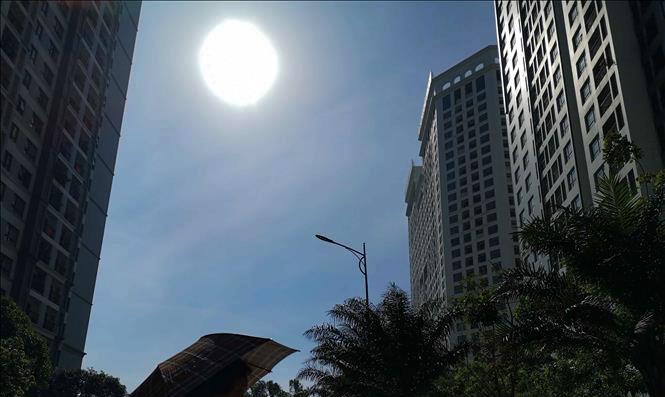Southeast region set to brace for sweltering heat in second half of March
Southern Viet Nam, especially the Southeast region has reeled under a scorching heatwave in recent days, with the maximum temperature settling above 35 degrees Celsius, making local residents feel tired and uncomfortable, according to Viet Nam’s National Center for Hydro-meteorological Forecasting.
 |
| Illustrative image . Photo: VNA |
As per the national weather service, the hot weather in the southern region is attributed to the combined effects of the subtropical high pressure system and low pressure area in west of the region.
Sweltering temperatures are likely to continue in the Southeast region, Northwest Region and western mountainous areas of the parts from Thanh Hoa to Nghe An in the second half of March, national forecasters predicted.
Ho Chi Minh City (HCMC) has been in the grip of a relentless heatwave with high temperatures and increased ultraviolet radiation (UV) which can also cause sunburn and cataracts.
According to the national weather service, HCMS’s maximum temperature over the past few days has settled at 30-35 degrees Celsius at noon while UV index has reached from 7 to 9. The maximum UV radiation level occured during the four-hour period between 11am and 3pm.
Heat and humidity are in forecast for HCMC and a number of southern localities in the coming days with the maximum temperatures expected to touch 33-34 degrees Celsius while the average humidity level in these areas will be between 40% and 60%. National meteorologists forecast no rain at night for these areas. UV radiation is generally highest between 11 am and 1 pm. While UV is important for getting vitamin D and keeping us healthy, too much of it can cause skin cancer or eye cataracts. The heatwave will blanket the Southern region and will peak in the upcoming National Reunification Day (April 30) and Labour Day (May 1).
The national weather service encourages residents in affected areas to take the necessary precautions to avoid exposure to the extreme conditions, as well as learn the risk factors and symptoms of heat-related illness to protect themselves and their family members.
The effects of high heat and humidity can create dangerous conditions that can lead to heat stress and illness. Symptoms of heat stroke include hot, dry, and red skin; a rapid pulse; rapid and shallow breathing; loss of alertness, confusion, and loss of consciousness.
Health experts recommend that people need to wear sunscreen and sun-protective clothing, such as long-sleeved shirts, long pants, and wide brim hats to keep delicate skin on the neck, ears, and face safe, UV protective glasses, in order protect their skin from the sun’s harmful UV rays.
Besides, people should take vitamin C supplements from fruits, use regularly sunscreen before they go outside, even on cloudy days.
The heat wave will bring life-threatening conditions to many people working outdoors. Anyone outdoors during the hottest times of the day will need to drink plenty of fluids, and take breaks from strenuous activities to lower the risk for heat-related illnesses.
Older people, those with underlying health conditions, and very young children are all more at risk from the higher temperatures. They will be at the highest risk for heatstroke or heat exhaustion, and should stay in air-conditioned locations when possible.
Reporting by baotintuc – Translating by H.L








